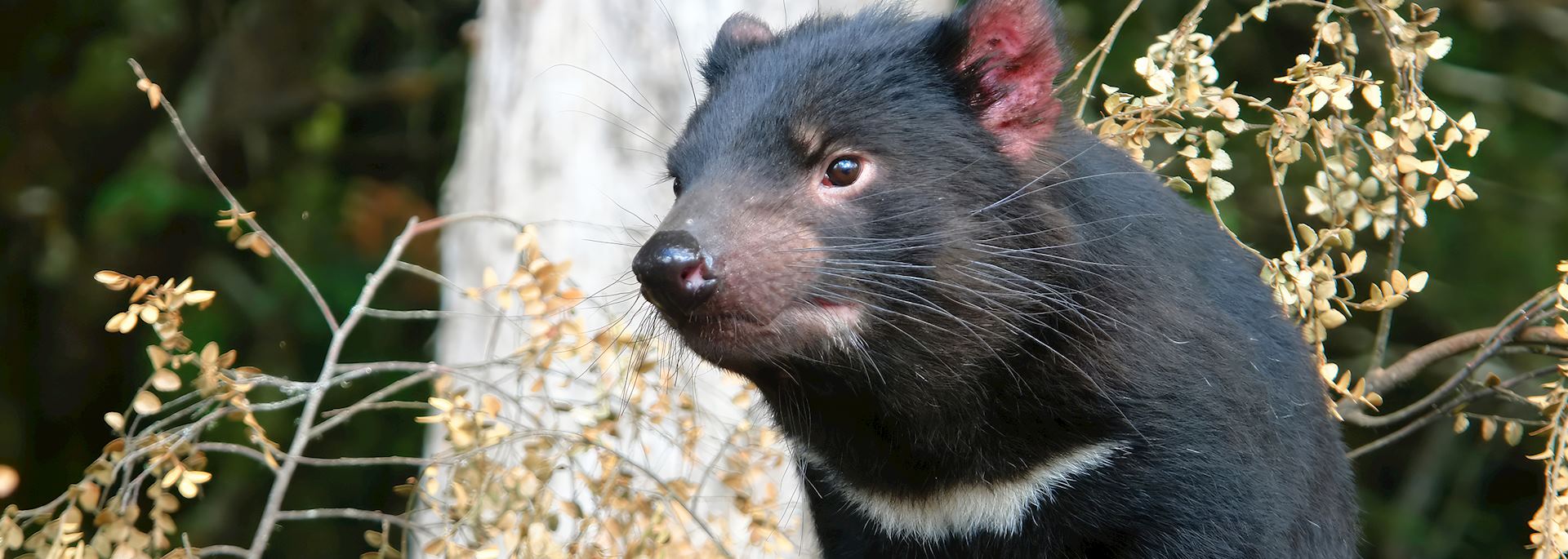By Australia Specialist Josh
We predict that 2024 will be a big year for travel to Tasmania. Dwarfed by Australia’s mainland, it nevertheless packs a mighty punch when it comes to innovative food and drink, wildlife species that make you look twice, and landscapes that range from steep-sided river gorges to forested mountains and gold-tinged beaches.
Australia specialist Josh suggests planning a trip to Tasmania before this tucked away region blinks even brighter on people’s radars. He shares his ideal route for next year that makes the most of the newest restaurants, stays, and experiences.
Days 1-2: Food & history in Hobart
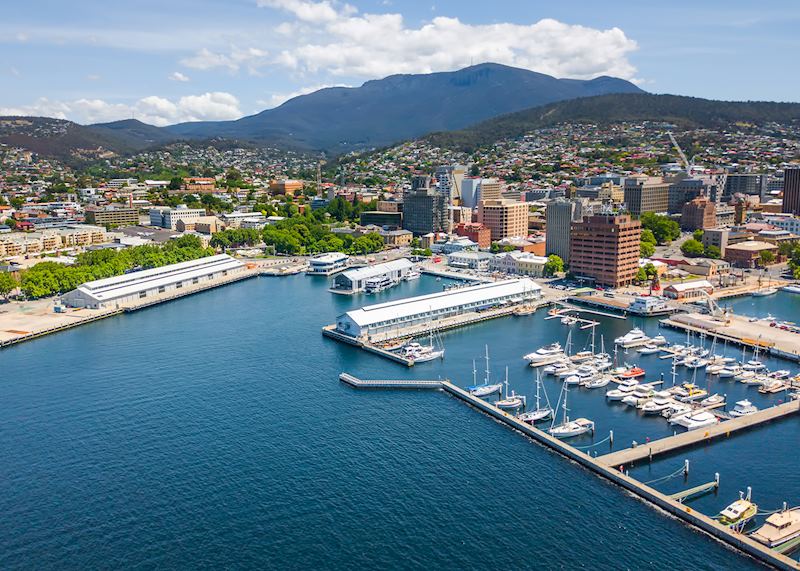
Begin your trip in Tasmania’s main city, Hobart. Rich in history, it also has an incredible food scene that rivals any city on the mainland. A few restaurants have opened in and around the city recently — I could book you a table at the Italian-focused Peppina, which is part of newly opened hotel The Tasman. Or, Van Bone is about 50 minutes outside the city, where ingredients are expertly cooked over charcoal or in a wood-fired oven.
When you’re not filling up on fine Tasmanian grub, I suggest joining a guided tour to learn more about Hobart’s past and present. We’ve recently partnered with local guides who can tailor the tour to whatever interests you. You’ll explore mostly on foot to get a feel for the place, perhaps dropping into local markets, wandering old backstreets and the waterfront area, and pausing at local bakeries and cafes for a tasty introduction to the emerging food scene.
Where to stay: Try out The Tasman in central Hobart, whose recent opening was much anticipated. Housed in an 1840s Georgian building, it has a stylish interior with objects found during its restoration on display.
Days 3-6: A multi-day trek on Maria Island
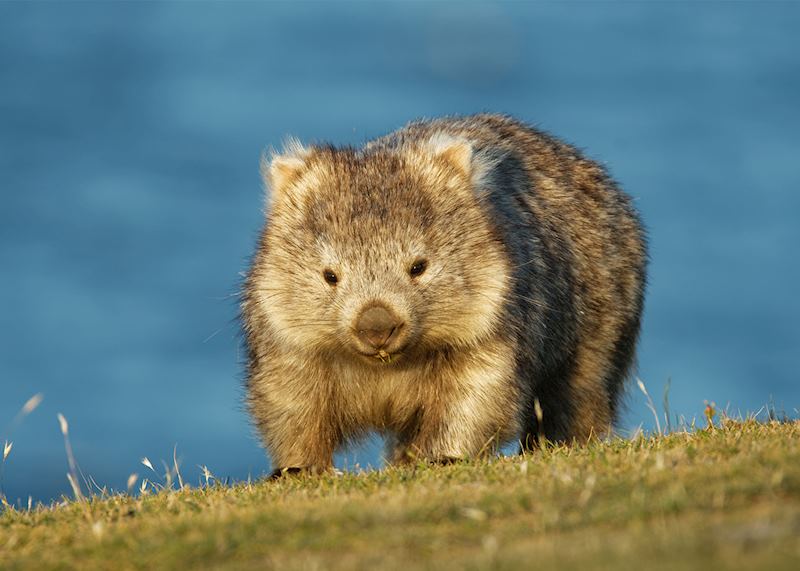
Did you know Tasmania has the most multi-day walks in all Australia? If you’re looking to keep active in 2024 or simply spend more time in the great outdoors, you could consider including one on your trip. I recommend a three-night trek through Maria Island National Park.
After catching a ferry from Triabunna, you’ll explore Maria Island on foot with a guide who’ll lead you along the coast, through forest, up mountainsides, and into rural villages. They’ll help point out wildlife as you go — keep your eyes peeled for wombats, wallabies, kangaroos, and endemic birdlife.
Where to stay: For the first two nights you’ll stay in a simple but comfortable camp, moving to a family-run B&B for your final night before returning to Hobart.
Days 7-8: Cruising & convicts in Strahan
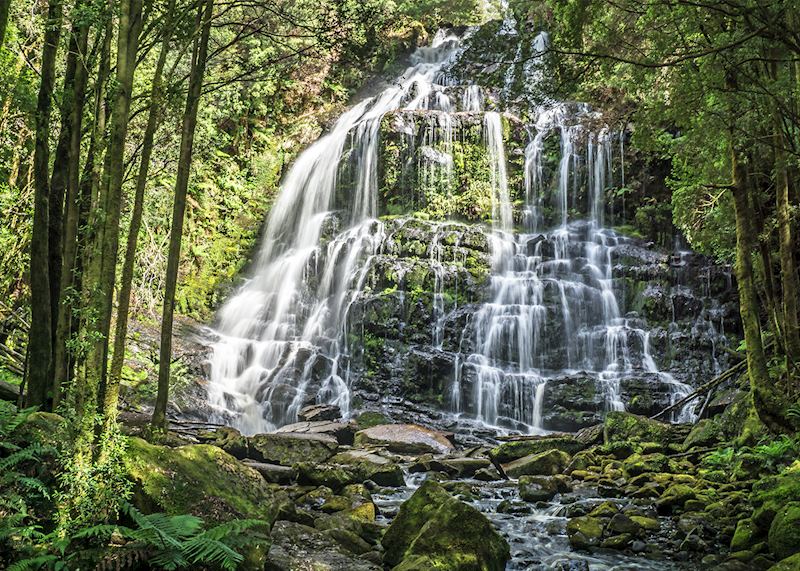
Take a long but leisurely drive to Strahan, on the west coast. I can suggest lots of places to break up the journey, whether you want to walk to a waterfall or visit The Wall in the Wilderness, a relatively new 100 m (328 ft) long sculpture near Derwent Bridge that illustrates the history of rural Tasmania.
The next morning, you’ll take a cruise along the Gordon River — I can book you premium tickets for the upper deck, which include drinks, comfy recliners, and a more private viewing experience. The journey takes you through the unspoiled wilderness of Franklin-Gordon Wild Rivers National Park, passing rainforest and distant mountains.
You’ll get a chance to stroll through the rainforest with a nature guide and pay a visit to Sarah Island, a former penal colony where prisoners were put to work felling pine trees. Actor-guides will show you around the island to help bring its history to life.
If you’re visiting in December 2024, you could catch a performance of an open-air play, The Ship that Never Was, which recounts the tale of a daring escape attempt by some of Sarah Island’s former inhabitants. It’s very interactive and great fun, taking place nightly during Tasmania’s summer.
Where to stay: Strahan Village has recently been refurbished and gives you the best views overlooking Macquarie Harbour.
Days 9-10: Hiking & devil encounters in Cradle Mountain-Lake St Clair National Park
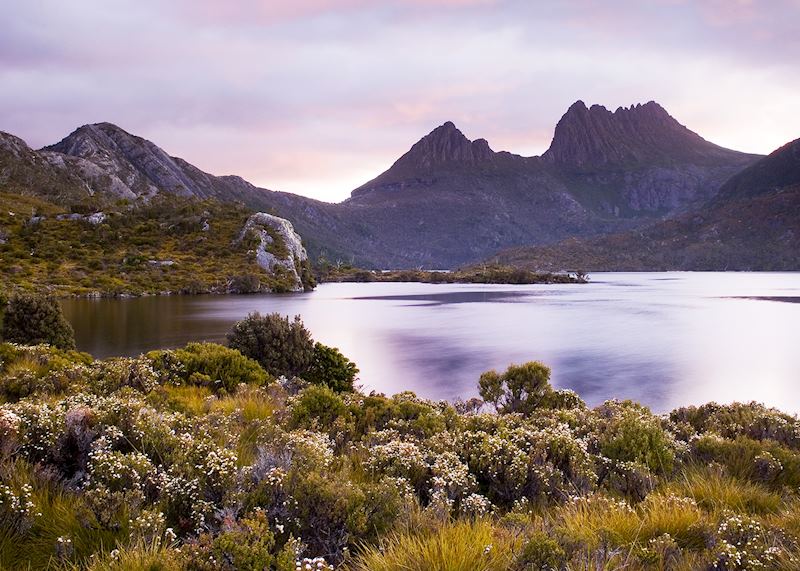
Weather-beaten moorland, glacial lakes, beech forests, and the sacred peak of Cradle Mountain make this national park a captivating place to go hiking. It’s a particularly good place to visit if your goal for next year is to take a break from technology and live in the moment.
The hiking route I like best loops you around the glassy waters of Dove Lake, with occasional views over the mountain’s spiky outline. One of the best sections takes you through moss-draped gum forest that feels like you’ve stepped into a fairytale.
The national park is also home to Devils@Cradle, a sanctuary for the state’s best-known species, the Tasmanian devil. You can visit in the day or during the evening to see what the endangered creatures get up to and learn about the sanctuary’s conservation efforts.
Where to stay: Peppers Cradle Mountain Lodge offers rustic log cabins, a spa, and a paddock-to-plate restaurant.
Days 11-12: Wine tasting & canyons in Launceston & the Tamar Valley
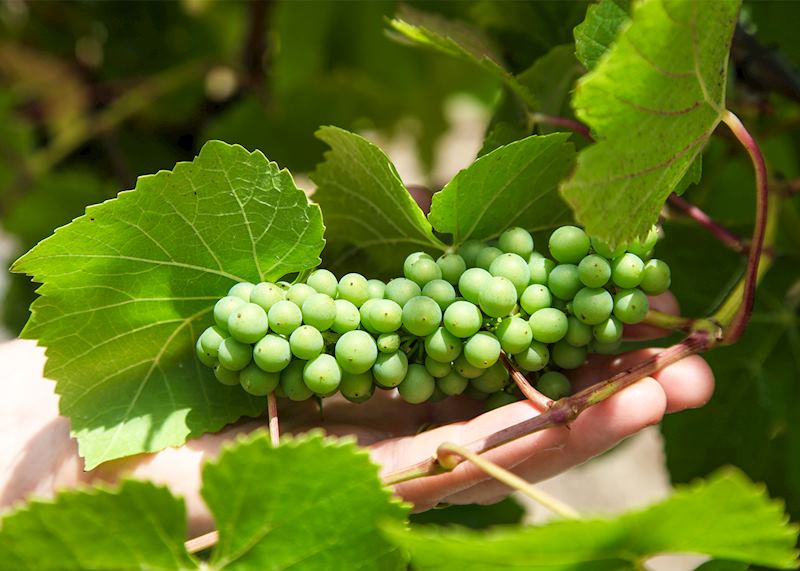
Launceston is a pretty riverside city towards the north of the island. I like its old-meets-new streets lined with independent shops and galleries. It’s also a UNESCO City of Gastronomy thanks to the growing number of restaurants, farmers’ markets, bars, and cool-climate wineries. An exciting recent opening here is the Black Cow, a steakhouse that celebrates Tasmanian beef, set in an Art Deco butcher’s shop.
While you’re here, you could head into the nearby Tamar Valley to visit some of the wineries and indulge in some tastings. Or, you could go for a walk or boat trip around Cataract Gorge and the surrounding park, admiring the steep forested valley sides and views over the South Esk River.
Where to stay: Peppers Silo Launceston is set on the Tamar River and its rooms are housed in four former grain silos from the 1960s, so it’s a really characterful option.
Days 13-15: Wildlife & wilderness around Scottsdale
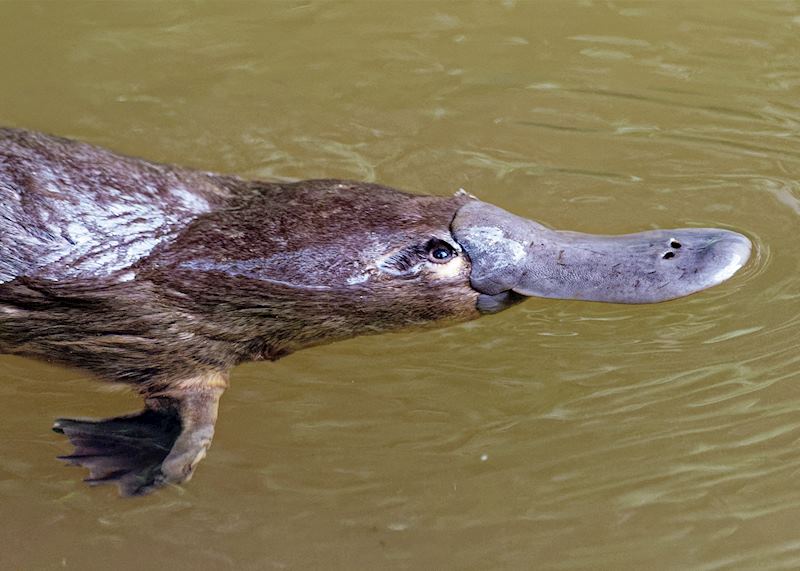
Hands down my best experience in Tasmania was spending a couple of days exploring the raw beauty of the northeast. You head out in a 4x4 with Bushie (real name Craig), a sixth-generation Tasmanian who knows all there is to know about the area’s wildlife. He’s an expert in tracking animals, so you have the best chance of seeing platypuses, quolls, wombats, and forester kangaroos, to name just a few.
Along with his son, Ben, he’ll take you to hidden spots only locals know, looking for telltale signs of animals’ presence and helping you forage for ingredients that he’ll then use in the dinner he cooks for you. As night descends, you’ll sit out around the campfire listening to whirring cackle of kookaburras and keeping a lookout for nocturnal stirrings from brush-tailed possums or Bennett’s wallabies.
While there’s no specific advantage to experiencing this in 2024, I’m conscious that this sort of tour will grow in popularity as more people visit Tasmania, so it’s a good idea to do it before everyone catches on and while the landscapes are quiet.
Where to stay: Your accommodation might vary but tends to be a small lodge or a log cabin.
Days 16-17: Coastal scenery in Freycinet National Park
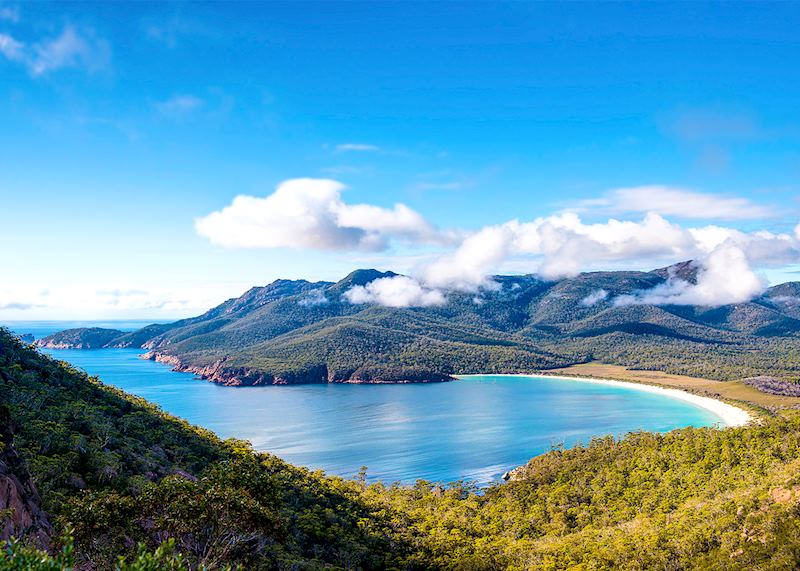
A peninsula on the east coast, Freycinet National Park is an area of gentle forested hills, butterscotch sands, and vivid turquoise water. It’s best to explore on foot, breathing in the sea air and soaking in views over the aptly named Wineglass Bay from an elevated lookout point (well worth the steep ascent).
I could also book you onto a cruise around the peninsula for a chance to see seals lounging at the foot of limestone cliffs, humpback whales spouting, and dolphins making their own fun in the waves, while albatrosses may spread their huge wings overhead.
Where to stay: Coastal Pavilions have recently been added at Freycinet Lodge, so you can now take the ocean views back to your room.
Day 18: A scenic drive back to Hobart
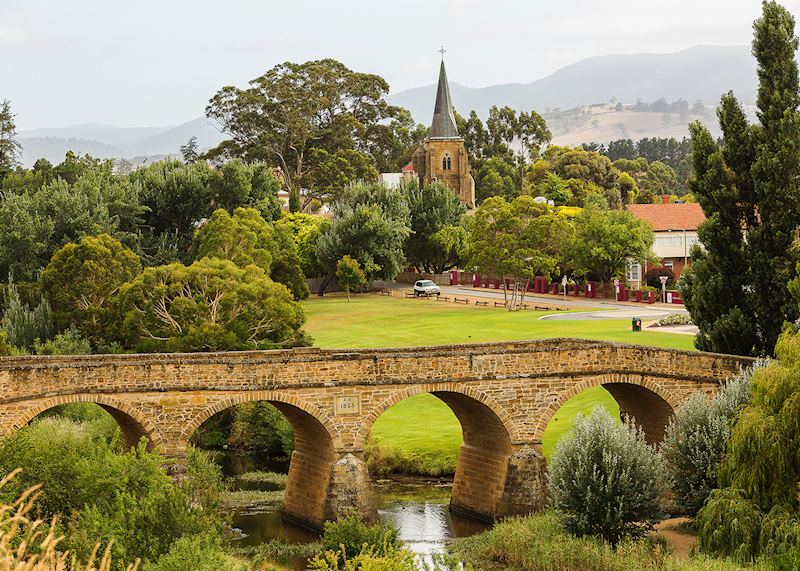
It takes around two and a half hours to drive back to Hobart, but you could break up the journey with a visit to the history-steeped village of Richmond, home to a 19th-century stone bridge, a former convict goal, and Georgian buildings housing cafes and galleries.
Get me there: You can experience Tasmania by following a loop similar to Josh’s suggested trip, shaped around your interests. The trip can also be adapted for a shorter visit, focused around either the east or west of the island.
Was this useful?


